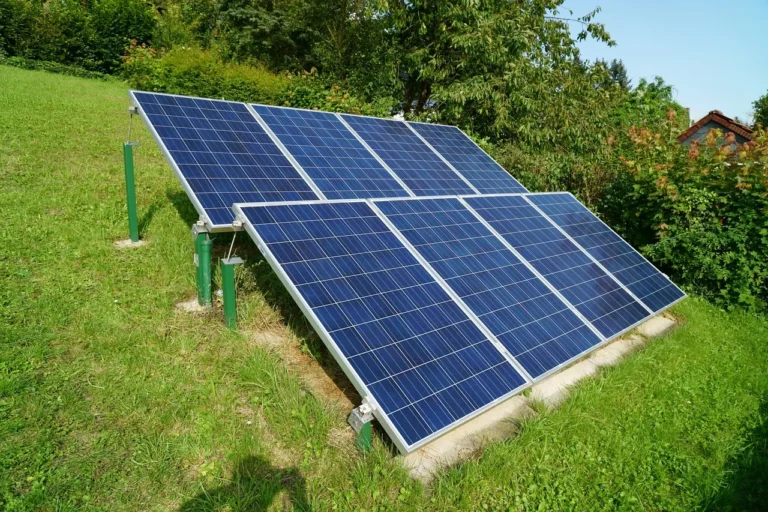
kWh Analytics Expands Climate Insurance Portfolio with New Excess Natural Catastrophe Coverage for Renewable Energy Projects
kWh Analytics, a recognized leader in climate risk insurance solutions, has announced the launch of a new insurance product tailored to address one of the most pressing challenges facing renewable energy developers and operators: the rising threat of severe weather events. The company, through its licensed insurance subsidiary, Solar Energy Insurance Services, Inc., is introducing Excess Natural Catastrophe coverage, a specialized product that provides additional layers of protection against losses from extreme natural disasters, particularly severe convective storms and named windstorms in non-coastal regions.
This new offering arrives at a critical moment for the renewable energy sector. As climate change accelerates, the frequency and intensity of destructive weather events such as hailstorms, tornadoes, and powerful windstorms have increased significantly. For renewable energy assets—especially large-scale solar installations, wind farms, and battery energy storage facilities—these hazards pose financial risks that can ripple through investors, lenders, and energy markets at large.
The Excess Natural Catastrophe layer is designed to complement kWh Analytics’ existing property capacity program, which already provides comprehensive operational and construction insurance coverage for solar, wind, and storage projects. While the current framework ensures baseline protection, this new layer offers up to $20 million in additional capacity targeted specifically at damage caused by convective storms and inland windstorms—two of the most costly and underinsured perils in the renewable energy space.
Addressing the Market’s Most Significant Loss Driver: Hail
One of the most striking findings driving this new product development comes directly from kWh Analytics’ proprietary loss database. According to the company’s research, hail accounts for 73% of total solar industry losses by damage amount. This staggering figure underscores the disproportionate financial impact of hailstorms on solar assets, which often involve sprawling arrays of modules exposed across hundreds of acres.
“As renewable projects grow in size and tax-equity investors and lenders require higher insurance limits, we’re addressing a critical market gap with this specialized excess layer solution,” explained Jason Kaminsky, CEO of kWh Analytics. He emphasized that while renewable energy expansion is accelerating, the industry has struggled to keep pace with the evolving risk landscape. Traditional property insurance has not always been sufficient to cover the catastrophic losses triggered by severe weather, leaving asset owners exposed. The Excess Natural Catastrophe coverage aims to fill this gap by providing peace of mind to project sponsors, investors, and financial institutions.
Rewarding Resilience Through Underwriting
At the heart of kWh Analytics’ approach is a philosophy that resilience should not only be encouraged but also financially rewarded. Insurance is not just about transferring risk—it can also drive better industry practices by incentivizing risk mitigation strategies.
Projects that incorporate advanced protective measures against hail and storm damage are more likely to access favorable terms within both primary and excess coverage layers. These measures include:
- Hail stow capabilities, which allow solar trackers to adjust panel angles during storms to minimize direct impact.
- Enhanced module specifications, such as increased glass thickness or reinforced frame structures.
- Robust operations and maintenance (O&M) protocols, ensuring timely inspections, maintenance, and storm response readiness.
By acknowledging these measures within its underwriting process, kWh Analytics encourages asset owners to adopt best practices that reduce risk at the project level and, by extension, across the renewable energy sector.
“Resilience should be rewarded at every level of coverage,” said Isaac McLean, Chief Underwriting Officer at kWh Analytics. “Our Excess Natural Catastrophe offering evaluates the same resilience factors we consider in primary coverage. We actively request asset owners and sponsors to share details of their hardening strategies so we can appropriately credit their risk mitigation efforts.”
This principle ensures that risk-conscious projects are not only better protected but also financially incentivized, creating a feedback loop that strengthens the overall resilience of renewable infrastructure.
The Role of the Hail Stow and Risk Evaluation Tool
To bring greater standardization and transparency to the process of evaluating hail resilience, kWh Analytics has partnered with VDE Americas, a globally respected technical and certification organization. Together, the two organizations have developed the Hail Stow and Risk Evaluation tool, an innovative framework that allows insurers, asset owners, and investors to assess and quantify a project’s storm defense strategies.
This evaluation considers a wide range of technical and operational factors, including:
- Panel specifications such as material durability, glass thickness, and impact resistance.
- Tracker stow angles and responsiveness, which determine how effectively a project can minimize exposure during storm events.
- Forecasting and monitoring systems, which improve response times and allow operators to implement protective measures before storms arrive.
- Testing and certification protocols, ensuring that equipment meets rigorous resilience standards.
By leveraging this assessment, projects with strong resilience features can demonstrate their reduced risk profile to insurers. This in turn allows them to secure more favorable insurance terms, even within the specialized excess layer. The tool represents a meaningful step toward aligning financial incentives with climate adaptation strategies.
Why Excess Coverage Matters for Renewable Energy
The renewable energy industry has experienced remarkable growth in the past decade, with utility-scale solar and wind projects now forming a significant portion of new energy capacity additions worldwide. However, the sheer scale of these projects—both in size and investment value—means that a single severe weather event can cause multi-million-dollar losses.
For example, a hailstorm striking a large solar farm can shatter thousands of modules in minutes, rendering the project inoperable and causing prolonged downtime. While primary insurance can cover some of these losses, project financiers often demand higher insurance limits to protect their equity and debt positions. Excess coverage provides the added protection necessary to meet these requirements and safeguard the long-term financial stability of projects.
The introduction of Excess Natural Catastrophe coverage by kWh Analytics therefore represents not just an incremental improvement but a critical evolution in how the industry manages risk. It reflects a recognition that traditional insurance solutions must adapt to a climate reality where extreme weather is no longer an exception but an expectation.








